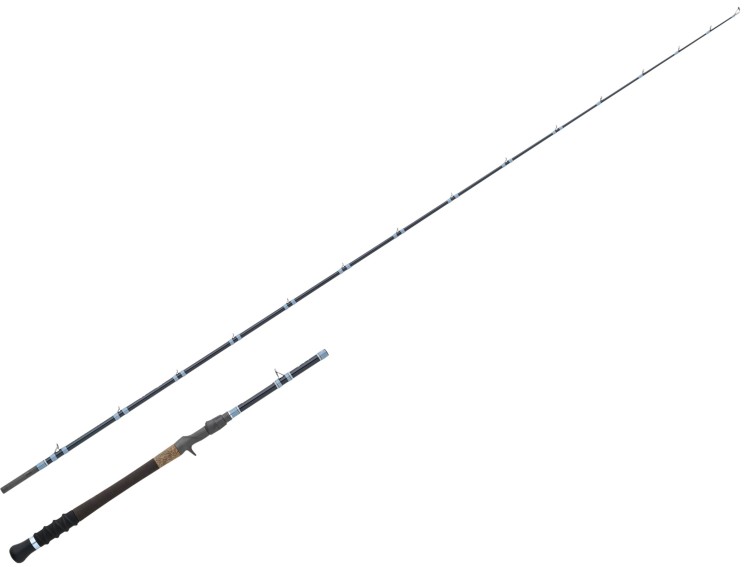TULALA Harmonix Corona 80XHSC-HX
Overview

Not "evolution" but "deepening" played by fusion
Harmonix: One of the playing techniques for stringed instruments such as the guitar. By lightly touching and plucking the strings, you can simultaneously obtain sounds with frequencies several times higher than the original sound. This sound is called a "overtone" and is called a harmonics rendition.
The low elastic stickiness and torque of the old material and the high operability and sensitivity of the new material.
Harmonix made it possible for these conflicting elements to coexist in a higher dimension.
Harmonix manufacturing is the fusion of old materials with new materials, giving the original sound at the time of performance as the old material and the overtones as the new material.
Tension and sharp hardness required before hooking fish such as casting and reeling.
And the flexible bending and stickiness that is necessary after the fish is hooked.
It is a completely new rod finished with all "Made in Japan" that can switch these two characteristics smoothly and automatically in one rod.

What is a hard and soft rod?
Most lure fishing is a type of pulse fishing.
Until the moment the fish arrives, you need the hardness and sensitivity of the rod to convey it. Hardness to cut the viscosity of water while moving.
For example, when you are twitching or trolling in the flow with a minnow, when you are making a delicate soft bait action ... In order to maintain the feeling of operation in such fishing, the lure rod needs to be set high elasticity. there is. It is a hardness that allows you to entangle with water, unentangle, and freely operate the lure.
However, even in these types of fishing, once the fish is caught, it requires a tenacious bend.
The rod mentioned above is thin, easily damaged, and has a limited bending width. For this, it is necessary to set the elasticity low.
When you break through the elastic outer shell like the latest rod, what appears from the inside is a soft old rod taste that bends like a muscle.
A rod that makes the best use of the bending and returning of the rod by just shaking it lightly, making it easy to get a long distance. It is the figure of a rod that an angler has drawn an ideal for many years. It's like a movie, but the actual production process isn't that smart.
Of course, if neither the engineer nor the angler has the skills, these two contradictory properties can be a mere rod that increases production.
Harmonics blanks were born by carefully solving these problems one by one with an analog method.

Specializing in large lures Bait rod for Akame & Seabass

The first strong rod in the Harmonics series that specializes in large plugs, including giant baits.
Corona 80 is designed with a blank that is not too hard, assuming the use of PE line.
While maintaining the tension necessary to operate large lures such as big minnows, big pencils, and giant baits, it follows the movement of the fish and bends firmly when fighting.
Bending also reduces hooking out of fish.
The characteristics of the "harmonix blank", which has both a firm operation feeling and an old taste that bends, will not change even if it becomes a thick rod.
In addition, what should be noted is the PE line trouble-free performance in Maeda Seisakusho's "straw setting" .
As a risk when using a giant bait, troubles (high cuts, etc.) caused by the line getting entangled in the guide can be considered, but these can be reduced by setting the guide. Furthermore, by suppressing excess line release, you can also expect a backlash reduction effect.
Lure weight is 40-250g, 4-6oz class is the best weight.
With a tight setting of 16 guides (*as of 2021) for an 8-foot rod, it is possible to receive the lure weight with the entire rod
It feels surprisingly light even when hanging a lure over 100g.
By making it difficult to feel the weight of the action of throwing and manipulating it, the burden on the angler who continues to cast lures all day long is greatly reduced.

Tip :

Straw Setting concept for PE :

Guide setting that grasps the merits and demerits of the main concept
PE line and brings out the merits such as distance, load distribution, sensitivity transmission, etc. in a total balance.
Features
Rod Sections (pcs) | 1.5 |
Rod Length | 244 cm |
Rod Closed Length | 177 cm |
Rod Weight | 275 g |
Rod Test | 40 — 250 g |
Rod Line | PE # 3 ~ 6 (based on leader 100lb) |
Rod Action | Regular |
Rod Other | Rear Grip Length : 390 mm |
Brand | TULALA |
| Bonus name | Discount | Discount, % | Affiliate |
|---|---|---|---|
| Cash Back 5% | 0 | 3640.04 |
Be the first to write a review of this product!

